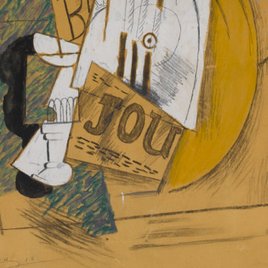Centre Pompidou Worldwide
Institutional
Press release

AN INTERNATIONAL APPROACH FROM THE OUTSET
Since its creation, Centre Pompidou has positioned itself as an institution that is both firmly rooted in the city and resolutely inter national in its outlook. This international outlook has become a defining feature of its identity.
This commitment was reflected in the decision to appoint Pontus Hultén, a Swedish museum director with a cosmopolitan vision, as director of the Musée National d’Art Moderne in 1973. For him, the purpose of the newly created Centre Pompidou was to “place Paris at the heart of cultural exchanges” and to engage French artistic creation in a constant dialogue with the international scene.
This positioning began to take shape with the inaugural exhibitions – Paris-New York, Paris-Berlin, Paris-Moscow – which laid the foundations for a connected museum, attentive to the intersections between avantgarde movements, territories and disciplines. The Centre has also emerged as pioneer in the recognition of non Western scenes, with major exhibitions such as Magiciens de la terre (Magicians of the Earth 1989), Alors la Chine ? (What About China? 2003) and Africa Remix (2005).
The international dimension of Centre Pompidou is also reflected in its architecture. The building was designed as “a place for all people”, in the words of Richard Rogers. This bold architectural choice embodies the desire to open up the institution and make it a space for sharing at the heart of a constantly changing world.
The Centre’s openness is naturally reflected in its collections: nearly 50% of the works in its collection come from international artists. This balance is the result of a remarkable history, as the current collection was inherited from both the Musée du Luxembourg and the Musée des Écoles Étrangères, reflecting its diverse origins and perspectives from the outset. Beyond the museum, the Centre’s multidisciplinary departments and organisations (Ircam (Institute for Research and Coordination in Acoustics/Music), Bpi (Public Information Library), the Culture and Creation Department) are not left behind, each operating since the origins in their own field within an ecosystem of international partnerships, collaborations and co productions. Ircam, in particular, operates within a network in its creative, research and educational activities.
Finally, Centre Pompidou has established itself as a key player in exchanges between museum institutions worldwide. Each year, around 6,000 works are loaned out, 50% of them abroad.
The end of the 1990s witnessed the affirmation of a globalized art scene, which led to a transformation of cultural institutions and an increase in the importance of network logics. The international experience of the Guggenheim, followed by that of the Louvre Abu Dhabi in the 2010s, demonstrated that a museum cannot be summed up by the building that houses it, but is embodied by a spirit, a set of values and expertise that can be exported. In this context, the closure of Centre Pompidou in the late 1990s was an important step in the structuring of its international action, including travelling exhibitions, dissemination of the Centre’s scientific and cultural expertise, and the development of its own resources.
Press officers:
Inas Ananou
00 33 (0)1 44 78 45 79
Mia Fierberg
00 33 (0)1 44 78 13 77
mia.fierberg@centrepompidou.fr
Communication and digital media department
Director
Geneviève Paire
Head of the press office
Dorothée Mireux



